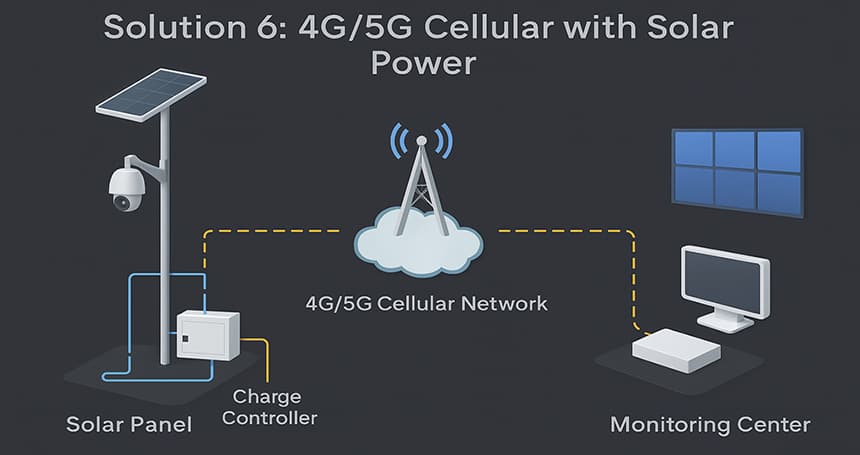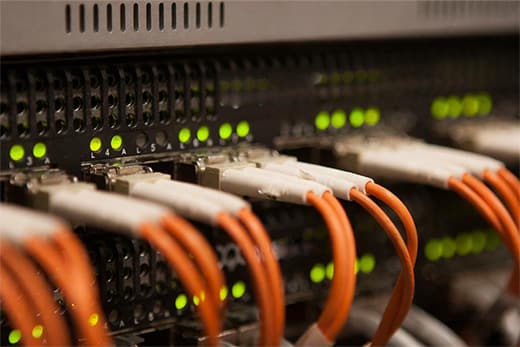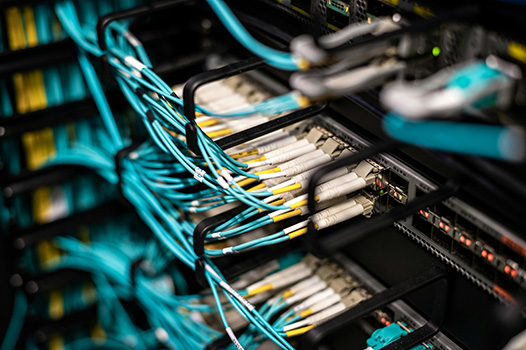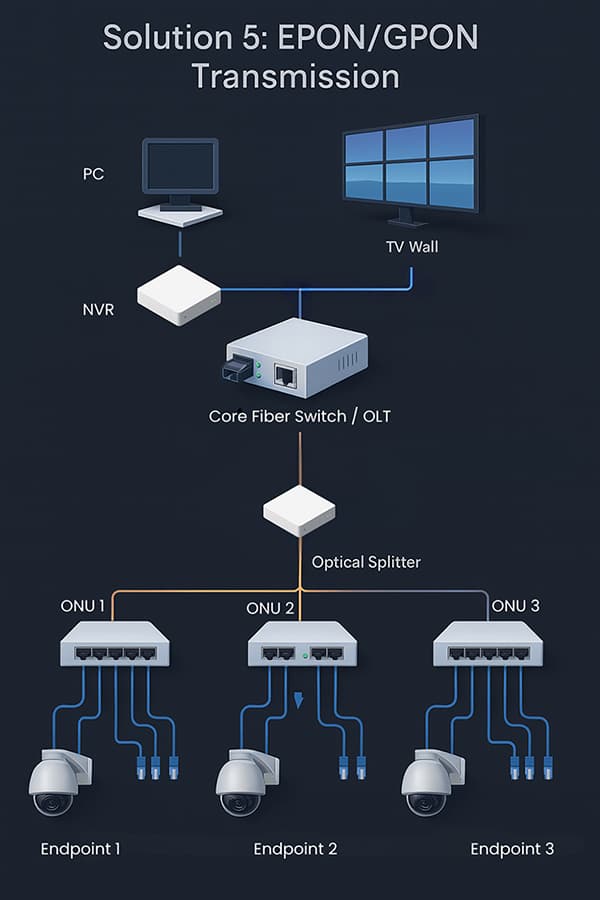The Ultimate Guide to 6 Surveillance Transmission Solutions for 2024
Introduction
When these devices are installed outdoors, project managers constantly ask
Traditional Wired Solutions
Solution 1: Coaxial Cable The Legacy Workhorse)

Solution 2: Direct Ethernet Cable
Best Suited For: Indoor environments like offices and retail stores where devices are located well within 100 meters of a network switch.Core Limitations: Its utility is sharply curtailed by thestrict 100-meter (328-foot) distance limitation of the Ethernet standard, making it unsuitable for any large-area deployment.

Expert Tip:
Let's settle a common debate right now. Yes, a non-PoE switch is cheaper on the shelf. But that "saving" vanishes the moment your installer has to run a second, separate power line to every single camera. That's double the cable, double the labor, and double the potential points of failure. In 2025, there's no question:
Wireless Solutions
Solution 3: Wireless Bridge (Wi-Fi)
How do you get a signal across a busy highway, a river, or a historic courtyard you can't possibly dig up? This is where wireless bridges shine. They create a virtual "cable" through the air, perfect for leaping over those impossible-to-trench obstacles.
Best Suited For: Spanning obstacles like rivers or public squares where trenching is not an option.Core Limitations: Vulnerable to physical obstructions and weather, leading to unstable bandwidth. They also present greater security risks and require independent power sources at remote locations.

Modern Backbone: Active Optical Network
Solution 4: Fiber Optic Backbone with Remote PoE
Breakthrough Distance: Easily supports transmission over 20 km, 40 km, or more.Absolute EMI Immunity: Completely immune to all forms of electronic and lightning-induced interference.Massive Bandwidth: Offers virtually unlimited bandwidth for today's 4K cameras and beyond.
Part B: The "Magic Box" at the Edge: The Remote PoE Node
Part C: More Than Cameras - Your All-in-One Security Outpost

Carrier-Grade: Passive Optical Network
Solution 5: EPON/GPON Transmission
Best Suited For: Large-scale, city-wide surveillance projects ("Safe City" initiatives) and telecommunications provider networks with thousands of endpoints.Key Difference: While powerful, PON architecture is generally less flexible and more complex to manage for typical enterprise or industrial projects compared to the active optical network approach.
True Off-Grid Solution
Solution 6: 4G/5G Cellular with Solar Power
For locations where no physical cables can reach and no power grid exists, this combination is the ultimate solution. It is the core technology behind any modern
How It Works: A 4G or 5G cellular router provides data connectivity, while a self-contained solar power system (panels, charge controller, batteries) provides 24/7 electricity for the router, cameras, and other devices.Best Suited For: The most extreme "dual-zero" environments (zero power, zero cabling). This makes it the perfect choice for deploying a completely independentsolar powered security camera system at remote farms, temporary construction sites, environmental monitoring stations, and mountainous areas.Core Limitations: It is entirely dependent on cellular network coverage and signal strength, incurs ongoing data plan costs, and has a higher initial investment due to the solar power components.

Conclusion & Solution Comparison
| Solution | Max Distance | Max Distance | Bandwidth | Power Solution | Recommended Use Case |
|---|---|---|---|---|---|
| Coaxial Cable | Short (<300m) | Poor | Low | Separate | Legacy Upgrades |
| Ethernet Cable | Very Short (<100m) | Moderate | High | PoE Capable | Indoor, Office |
| Wireless Bridge | Medium | Poor | Unstable | Separate | Spanning Obstacles |
|
|
|
|
|
|
|
| EPON/GPON | Very Long | Excellent | Very High | Separate | City-Wide, Carrier |
| 4G/5G + Solar | N/A (Signal) | Excellent | Variable | Integrated Solar | True Off-Grid |
 A Deep Dive into High-Speed Data Center Interconnects: A Field Guide for Engineers on DACs, AOCs & Optical Transceivers
A Deep Dive into High-Speed Data Center Interconnects: A Field Guide for Engineers on DACs, AOCs & Optical Transceivers
 The Ultimate "In-Rack" Showdown: DAC vs. Transceivers vs. AOCs
The Ultimate "In-Rack" Showdown: DAC vs. Transceivers vs. AOCs
 Fiber Exhaustion? The WISP & MSP's Field Guide to Passive CWDM Expansion
Fiber Exhaustion? The WISP & MSP's Field Guide to Passive CWDM Expansion


